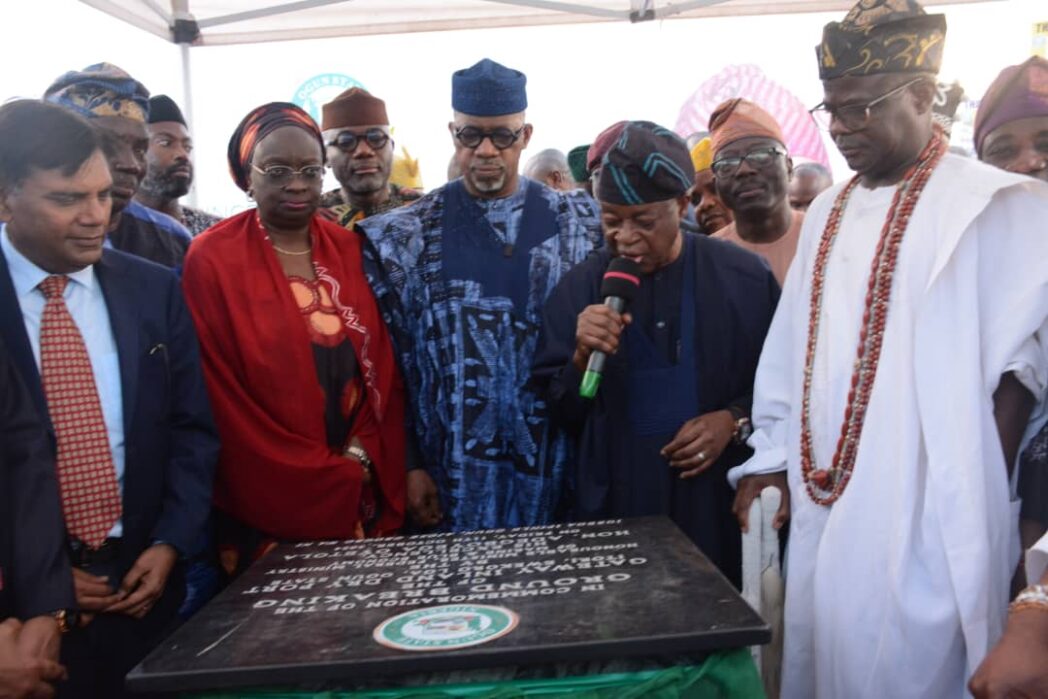


Ogun dry port: Yet another game changer in Nigeria’s industrial capital
The Ogun State governor, Prince Dapo Abiodun, is apparently one politician unmoved by the antics of mischief makers. While getting panned by hack and hired writers for “building no roads”, he built over 600km of roads in just four years. The critics travelled on the Sagamu-Abeokuta road and the Mojoda-Epe-Ijebu Ode road, among many others, saw the various housing estates he built—Kobape, Sagamu, Abeokuta, etc—and marveled at the Gateway International Airport, Nigeria’s biggest cargo airport, yet they hid under the Federal Government’s (FG) decades-long neglect of its roads in the Gateway State to disparage the governor’s good works. But when the people’s governor reinvented diplomacy and got Abuja to hand over the most strategic federal roads to his government, bringing succour to a longsuffering populace, they became shell-shocked. Among others, the Sagamu-Ore Benin expressway and the Abeokuta-Ifo-Ota-Lagos expressway are witnessing massive attention, as is the federal road leading to the FG’s Laderin Train Station in Abeokuta. On October 11, Governor Abiodun performed the ground-breaking ceremony for the development of an inland dry port at Papalanto/ Itori In Ewekoro. From roads to airports, and from dry ports to free trade zones, the Ogun State helmsman is turning the Gateway State into a massive construction site.
Normally, a port is by the sea. But it can be congested, making cargo clearance quite inefficient. That is why dry ports or inland container depots are set up. The dry port is a transportation hub that enables the efficient movement of cargo by rail, road, or sea. It is an alternative route for cargo movement which facilitates trade and promotes economic development in inland regions. Dry ports function like normal seaports, with cargo handling and storage facilities, warehousing and logistics services and customs clearance and inspection services at the heart of their operations. Indeed, cargo tend to be cleared faster at dry ports. In Nigeria, you find dry ports in big cities such as Abuja, Port Harcourt, Kano, Jos, Maiduguri and Ibadan. But the best is about to be sited in Papalanto/Itori.
Already, the first African Quality Assurance Centre has been cited in Ogun State. Given Governor Abiodun’s economic and industrial growth agenda, an agenda that takes due cognizance of the roles shipping services play in global trade and commerce, it is no wonder that the building of the Gateway Inland Dry Port (GIDP) has been flagged off to complement the strategic transport infrastructure across the state. As the GIDP or ‘Dry Port City’ (DPC), modeled after the extremely vast airport city that places the Gateway International Airport amid a city with emerging industrial dynamics, comes on stream, it will be accompanied by residences, logistics infrastructure, complimentary commercial and industrial developments and new multi-modal transportation infrastructure. The GIDP and DPC will have a railway siding area, container freight station and container depot area, warehouses and bonded warehouses, mineral yard, truck parking, specialized industrial zone, supporting facilities and utilities, internal road network and green areas. The objective it to sustain Ogun State’s rapid industrial growth, addressing increased urbanization as well as supporting national efforts to ease the congestion at Apapa/Tin Can ports, alleviating traffic bottle necks and reducing the waiting time for cargo handling and storage experienced by industry.
Speaking at the ground-breaking ceremony for the development of the inland dry port, Governor Abiodun noted Ogun State’s status as Nigeria’s Industrial Capital with over 6,000 industries. As he noted, having nurtured the goal of providing focused and qualitative governance, providing the required infrastructure and an enabling environment for public private sector partnership that is fundamental to economic growth and individual prosperity of Ogun people, he established the Ministry of Transportation and rolled out a State Transport Masterplan to define priorities. The Masterplan, he said, identified the need to build a seaport and a dry port, together with investment in rail transport, among others. And so the dry port sitting on 600 hectares (Phase 1) came on stream.
He said: “Today history is being made by this ground breaking of the Gateway Dry Port/ inland container Terminal. This facility is a key enabler of industrial activity and manufacturing in Ogun state .It will on completion will increase the ranking of our state on the ease of doing business inde. Because of the rail line right here, containers destined for Ogun can be destined CIF Kajola and on arrival loaded on the train, and transported to Shederu Kajola. Our manufacturers will be able to bring in their raw materials without having to go through the hassle of going to Lagos Tin can or Apapa Ports to clear and transport whilst dealing with the attendant demurrage cost that add to their overall cost for production. Ditto for their exports as well. Finished goods can be stuffed into containers and exported from here. This initiative will definitely not just reduce the congestion at both Lagos Tin Can and Apapa ports but will make both ports more efficient . Furthermore this will reduce the vehicular trailer traffic on our roads thus reducing the wear and tear and early maintenance on roads leading in and out of Lagos. With the Gateway Inland Dry Port, we are solidifying our position as the foremost logistics and industrial hub in the country, bringing unparalleled advantages to businesses operating here.”
Also speaking on the occasion, the Minister of Marine and Blue Economy, Adegboyega Oyetola, declared that the Gateway Inland Dry Port will be a model for existing and prospective inland dry ports in Nigeria. As Oyetola noted, the government’s intention is to de-congest the premier seaport in Apapa, boost the economy with seamless movement of goods, and generate both direct and indirect employment opportunities for Nigerians through cargo warehousing and logistics. His words: “Today, as we launch this initiative, we acknowledge the vast economic potential of this Inland Dry Port. This project is not merely about building infrastructure but about laying the foundation for a key logistics hub that will facilitate the movement of goods across Nigeria, creating over 5,000 direct jobs, 15,000 indirect jobs and stimulating local businesses.”
Significantly, the GIDP and DPC are strategically positioned at the intersection of the Lagos to Ibadan Standard Gauge Railway and the proposed East-West Railway Corridor connecting Lagos to the east via Kajola. The site is also connected to the national highway network being accessible via the Lagos – Abeokuta Highway and the Sagamu to Benin and Sagamu to Lagos highways via the Papalanto to Sagamu Interchange road.
With the agro cargo airport, aggressive road construction and dry port, Ogun is bound to reap great multiplier effects as a nerve center of the Nigerian economy. Great times are here in Dapo Abiodun’s Ogun State.
Akinmade is Special Adviser on Media and Strategy to Governor Dapo Abiodun



